
During the height of the Cold War, in a world besieged by fear, the Murkoff Corporation finds its calling: kidnap test subjects, surgically implant night-vision goggles, and then let them loose inside a giant game of hide and seek. The prize is freedom, but the risk is either death… or insanity.
Canadian developer Red Barrels is no stranger to things that go bump in the night. 2013’s Outlast and its 2017 sequel Outlast II were all about blending the fear of the unseen with the fear of being seen by whatever was lurking in the darkness. In a way, the similarities to a childhood game of hide and seek are quite clear – the not knowing if you’d been rumbled as you tried to stay quiet and motionless, even though you could see your pursuer inching closer to your hiding place.
Wrapped up in a heavy storyline involving the criminally insane, murderous cultists and MKUltra mind control experiments gone awry (not that they could go any other way), the Outlast games offered something of a unique horror experience in that they encouraged players to avoid confrontation and rely squarely on the flight component of the autonomic nervous system. Creeping through the unlit corridors of Mount Massive Asylum or among the cornfields and outbuildings of Coconino County with only the night-vision mode of your video camera to aid your investigation and escape, there was something truly primal about Outlast’s brand of survival/psychological horror that, while arguably reliant on many tropes of the genre, also made them some of the most intense games of their generation.
SOCK PUPPETS
This story is from the {{IssueName}} edition of {{MagazineName}}.
Start your 7-day Magzter GOLD free trial to access thousands of curated premium stories, and 9,000+ magazines and newspapers.
Already a subscriber ? Sign In
This story is from the {{IssueName}} edition of {{MagazineName}}.
Start your 7-day Magzter GOLD free trial to access thousands of curated premium stories, and 9,000+ magazines and newspapers.
Already a subscriber? Sign In
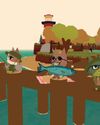
REEL GOOD
WEBFISHING is a fantastic throwback to old-school chatroom games
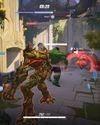
RIVALS ASSEMBLE
MARVEL RIVALS' chaotic fun may be short-lived
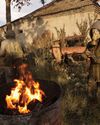
STALKER 2
Make the hostile Zone a little more friendly with mods.
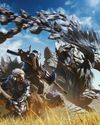
MONSTER HUNTER WILDS
With Wilds, Monster Hunterflaunts new storytelling chops

BLENDING IN WITH THE LIVING IN DIVINITY: ORIGINAL SIN 2 PART 1
Can the long-dead Mister Fibula pass himself off as a regular joe? Probably not...

MARVEL'S SPIDER-MAN 2
Is there anything better than a Spidey sequel to start 2025?

LOVE'S LABOURS LIBRARY
Building a library with BALDUR'S GATE III's foremost librarian

TRIGGER HAPPY PC
The rise and fall of the joystick
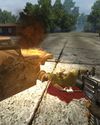
GREEN AID MONSTER
Jensen Huang says Al's essential for graphics. What does that mean for gamers?

SNUG LIFE
Cosy games have escaped the farm to become a huge-selling genre of their own